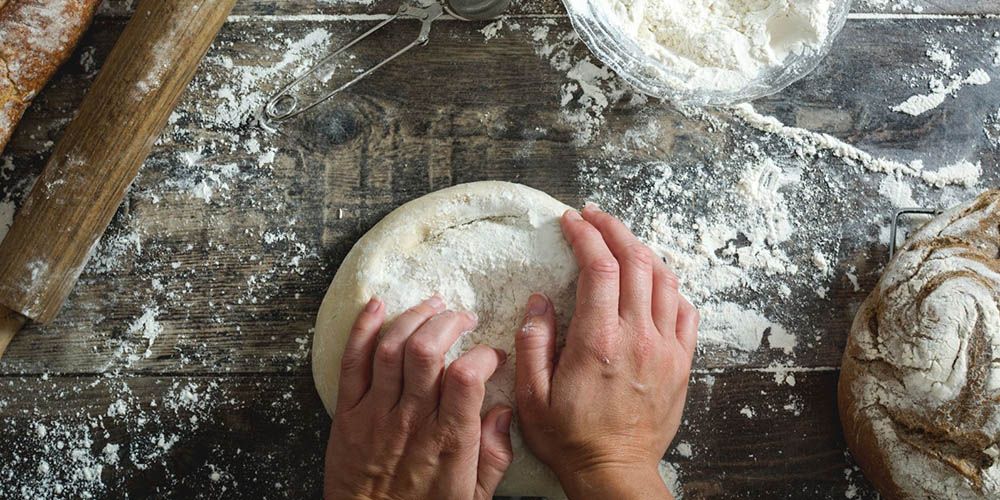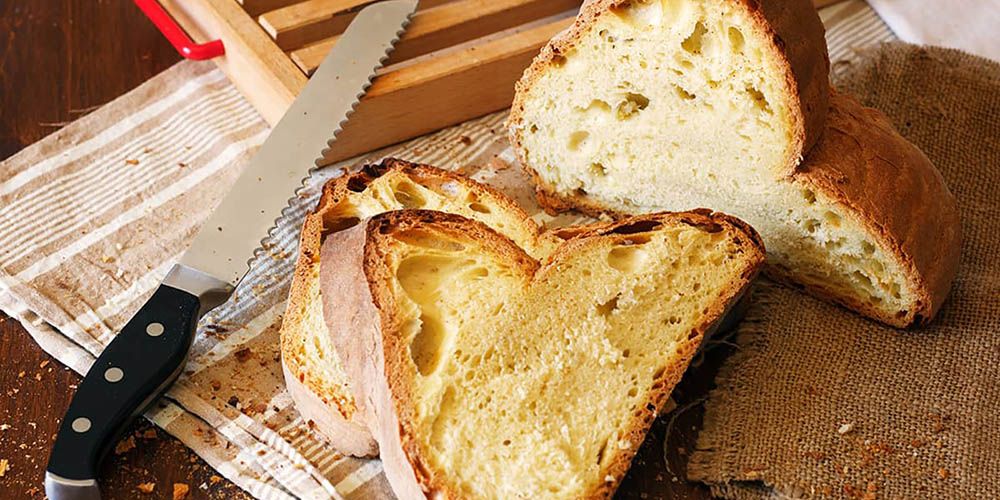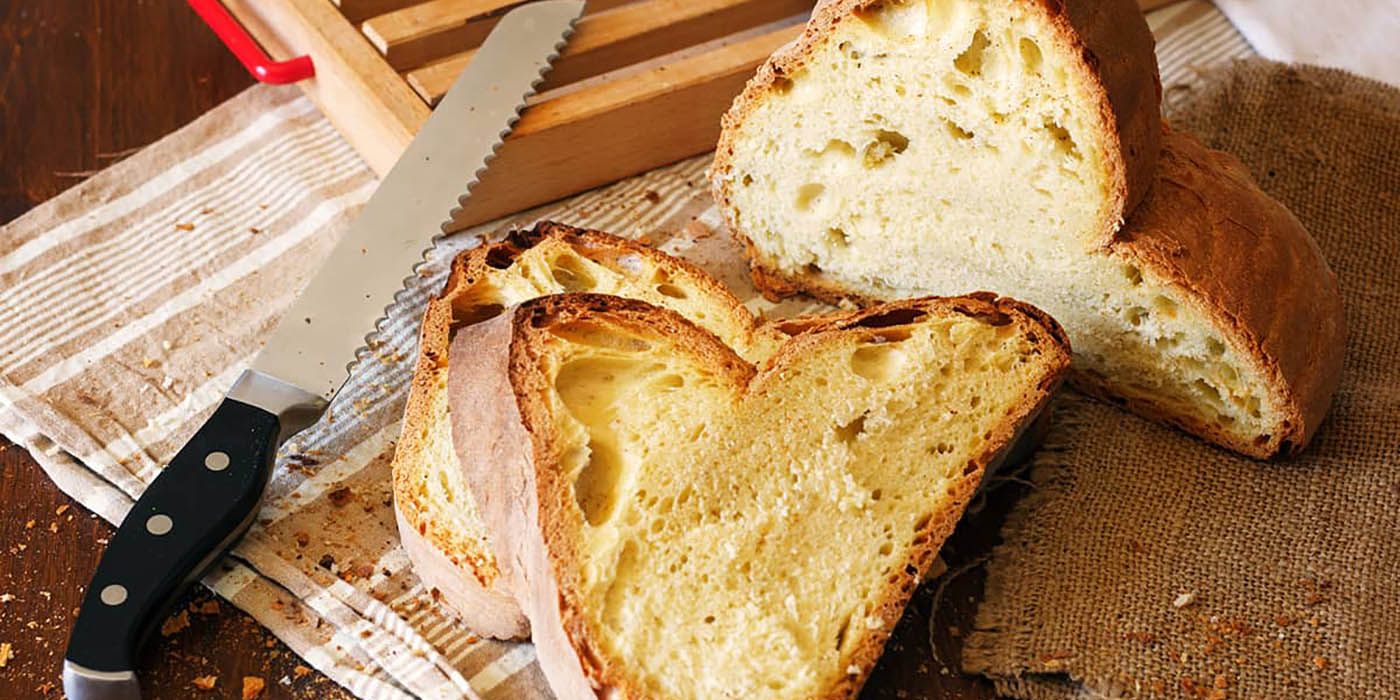Altamura bread is one of the most famous gastronomic products in Puglia. It has very ancient origins. The latin poet Orazio (1st century BC) in a passage from the Satire wrote: "best bread in the world, so much so that the diligent traveler brings a supply for the continuation of the journey".
But the fame of Altamura bread does not end here. It has continued to grow over the centuries until the present day. In 2003 it was the first flour starch to obtain DOP (protected designation of origin) certification, affirming its excellence in the entire Italian peninsula. But what is the story?
The history of Altamura bread

The tradition of Altamura Bread is linked to the family and peasant sphere. One of its most important characteristics is its durability. It was kneaded at home and then taken to the public ovens of the city. Its traditional shape was called L'u scquanet (or squanete), normally it was produced in large pieces.
It was consumed in the fields by farmers and shepherds, often forced to stay away from their home for days. Bread was eaten in the form of soup, seasoned with olive oil and salt. A poor food which has remained one of the cornerstones of local cuisine.
Take a tour to discover Apulian street food in BariAltamura bread ovens

Even today, the city of Altamura is dotted with ancient bakeries that continue to prepare bread according to the traditional recipe. The oldest bakeries have been baking since 1400! To identify their loaf, and avoid confusion with others baked in the same oven, women used to stamp the bread before baking.
The stamps, still sold as souvenirs, carried the initial of the head of the family. Milling activity (grinding with stone mills) was also concentrated in this area. At the beginning of 1600 in Altamura there were 26 transformation plants in full operation.
Recipe and characteristics of Altamura bread

The recipe for Altamura bread has been the same for generations. The manufacturing process is divided into five phases: kneading, forming, leavening, modeling, cooking in a wood or stone oven.
Even the ingredients have remained unchanged over the centuries: durum wheat flour, mother yeast, salt and water. It has the appearance of a dark loaf with a straw yellow crumb. It is crunchy on the outside and soft on the inside. Even its characteristics must follow precise indications: weight of the loaf not less than 0.5 kg, rind with a thickness of not less than 3 mm and the humidity must not exceed 33%. The wood used for cooking can be beech or chestnut.
The wheat comes from the surrounding territories, all located in the Alta Murgia National Park and in the Ofanto River Regional Natural Park: Gravina di Puglia, Poggiorsini, Minervino Murge and Spinazzola. The semolina is made from the varieties of wheat "appulo", "arcangelo", "simeto" and "duilio". To the dough, active mother yeast has been added for generations and renewed daily, with the addition of sea salt and local water. Each dose is calculated perfectly and each step carried out scrupulously. Obviously bread is also the basis of numerous typical recipes. Like the "cialledda": stale bread softened with water and seasoned with carousels, onion, salt, oregano and oil. It is a must, passing through the Alta Murgia, to stop in an ancient bakery in the city and make an abundant supply of Altamura bread. The goodness of this special food has contributed to keeping alive its fame and its tradition that will continue to grow over time.
Altamura Bread Today

As we have seen, Altamura bread represents a true Italian excellence. Even today, thanks to its durability, this bread can be preserved for days, up to a week, maintaining its characteristics intact. We invite you to visit the splendid city of Altamura and discover one of its historic bakeries, they represent a true institution. Finding where the bakeries are is not difficult, in Altamura there are 90 bakeries, just let yourself be guided by the smell of freshly baked bread, walking through one of the streets of the town.
The fame of Altamura bread continues to spread thanks to the preservation of a traditional recipe passed down from generation to generation that has managed to maintain the crunchiness of the crust and the soft interior of crumb unchanged. Bread is an important component of the Italian diet in particular, and the Mediterranean diet in general, on October 16 of each year, World Bread Day is celebrated, celebrate by eating a slice of Altamura bread.
About the author
Written on 20/07/2020



Maria Luisa Ancona
Discovering the tasty Altamura Bread, one of the most famous gastronomic products of Puglia, still made following the ancient traditional recipe